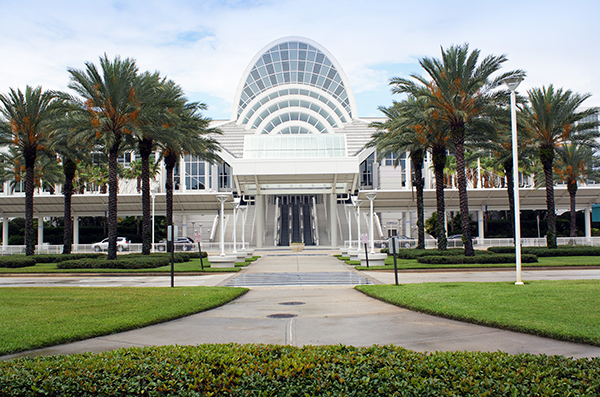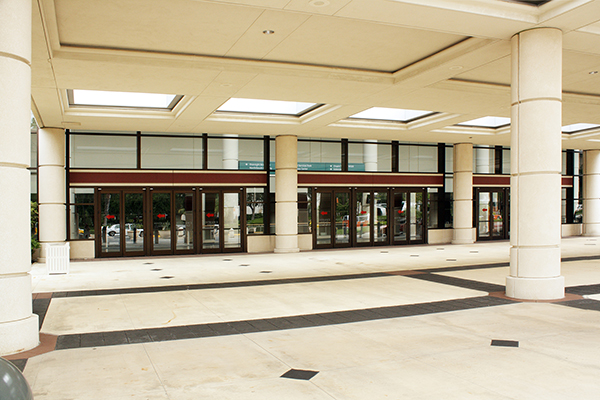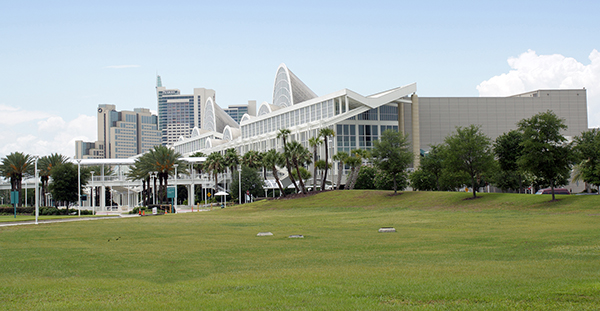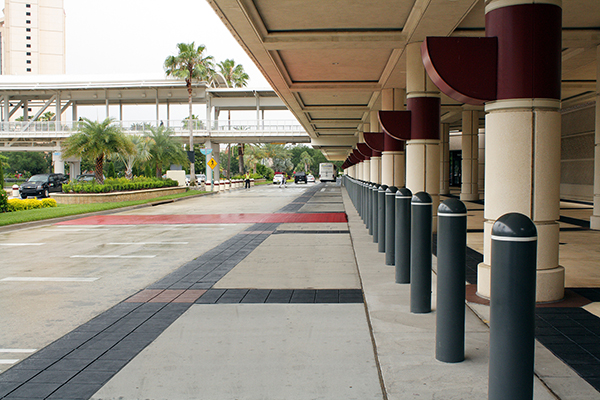“We’ll push from the loading docks to this area for staging, then we’ll separate it according to which floor it goes to. Be aware of what’s going on around you, and above all, be safe. Let’s get to it.”
Thus began the load-in for a corporate gathering of 20,000-plus attendees at the Orange County Convention Center in Orlando. Unloading trucks and sorting the equipment to go to the storeroom on each of four floors for more than 50 breakout rooms. Not as sexy as mixing front of house for a headliner, but it pays the bills, and it’s easy money, except for pushing road cases from one end of the building to the other in one of the largest convention centers in the country during the load-in and load-out.
That first day, everyone in the small army of stagehands and technicians logged about 12 miles on foot. At the end of the day, my feet were begging me for relief. Organizationally, it was very different from a similar load-in last year.
Back & Forth
The two rooms to which I was assigned were on the extreme south end of the building but directly above the meal room, which was one floor below. Those of us who had to trek from the opposite end of the building for lunch had a full 15-minute walk at the pace of an OFG (Old Fat Guy). Thirty minutes roundtrip.
The second day was sign-in on the third floor in the main staging room/temporary headquarters, then push from the staging room on each floor to the individual meeting rooms. More walking. Back and forth, from one end of the building to the other. Once that was done, we could begin setting up our individual rooms according to a diagram and equipment list.
The third and fourth days were the easy money. Sign in on the third floor in the main headquarters room, then monitor the room to which we were assigned.

The fifth day had sessions in the rooms that morning, then lunch, then strike, push, and load – the usual routine. Some of the empty road cases would fit behind the fast-fold screens with dress kits, while the rest went back to the staging room. More walking.
The trek from my room to the staging room on my floor was 7.5 minutes without pushing a road case. Minimum 15 minutes round trip. (I lost count of the number of times I made that trip, but it was easily an average of six per day. That’s an hour-and-a-half of just walking that the client has to pay for. Multiply that times the number of other technicians who did the same thing, and you’re looking at entire work days in the aggregate of just walking. By my estimation, almost half of what the client paid for on this gig was walking.
Showing The Way
Compare that with a gig I did last year. Same venue, approximately the same number of attendees, and approximately the same number of breakout rooms, but a very different organizational approach.
The on-site crew lead had separated the project into zones, and each road case was clearly marked to go to a particular zone. Each zone had a lead who was responsible for gathering the equipment at the warehouse prior to the event and deploying it on site.
As we unloaded the trucks and pushed the gear into the main hall for staging, I noticed that one particular zone lead appeared to be quite a bit more experienced (translation: “older”) than the others, and he appeared to be more interested than his comrades in what we were doing… or perhaps more accurately, the way we were doing it. He didn’t say much, just watched us more intently than the others. It later became apparent why.
After the trucks were unloaded and the gear was in the main hall, we gathered as a group, and each zone lead chose a predetermined number of local freelancers. The “more experienced” gentleman chose first, and he chose me along with some other A-list freelancers whom I knew to be almost equal to my capabilities, (“Yes, dear, you keep believing that.” – my wife), and whom I enjoy working with because we make a great team. It turns out that this gentleman’s experience had taught him to watch us during load-in and identify the seasoned technicians by observing the way we interact with each other and the way we work.

Unfortunately, the staging area was on the opposite end of the building from my particular zone, but it couldn’t be avoided because of the crowded loading dock and the expo that was also loading in as part of the event. So we made numerous trips from one end of the building to the other. At the end of the day, probably half of the hours we logged were just walking.
However, we were only responsible for the equipment that was designated for our particular zone, and once the equipment was in the back hallway, ready for deployment into our respective rooms, the only time we left our zone was for meals, and the meal room was located in the center of the building. No more walking from one end of the building to the other.

Upon arrival each day, we signed in with our zone lead, so we didn’t have to walk to a temporary headquarters and then to our room. Our zone was our world for the duration of the event. At the conclusion of the event, we were responsible for loading out only the equipment in our particular zone to the main hall, followed by the final push to the loading docks. As a result, the client didn’t have to pay us for hours of just walking.
Most of us can probably remember working a couple of gigs that were polar opposites from an organizational perspective. As freelancers, we’re generally not responsible for those kinds of decisions, and over a long career, no one has ever asked me for guidance or advice in that regard. But for those who are responsible for making those kinds of decisions, hopefully you can benefit from a tale of two load-ins.















